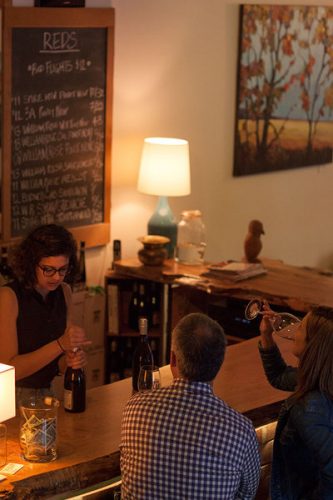
According to recent data, wine now generates $3.5 billion annually and accounts for 17,000 jobs in wine and related businesses in Oregon. Now, that’s impact.
And it seems to be growing. Consider our (fairly) recent history:
Wine grapevines apparently entered the Willamette Valley with the earliest (white) settlers. Many of those folks came from European cultures (France, Italy, Germany) in which wine was part of everyday dinners; farm families grew their own grapes, made their own wines and consumed them at their tables. Common histories show wines made in the 1840s; pioneer photographer Peter Britt planted vineyards and started the first commercial winery — Valley View — in Jacksonville in the mid-1850s. And it was good wine.
Then came Prohibition, in 1914 in Oregon, four years before the rest of the nation. Almost overnight, wine disappeared, and the laws prohibited even mention of wine in histories.
So, by the 1960s, it was commonly believed among viticulture professionals and academics that Oregon was too cool, too wet, too something, and that vinifera grapes, the source of the noblest wines, would never ripen in this climate.
Luckily for us, two iconoclasts, Richard Sommer and David Lett, forged into the soggy hills and planted their vines. Sommer launched HillCrest near Roseburg; Lett started The Eyrie Vineyards further north and earned the honorific nickname of Papa Pinot. In both cases, the wines were very good.
By the ’70s, Oregon had five working wineries. In 2015, according to fast-changing figures, we now have more than 500, with more coming, so fast it’s hard to keep current. And the wines are very, very good, especially the pinot noirs, which have garnered global praise, but also a whole range of whites and reds that thrive not only in the cooler valleys but, like the so-called “big” reds and whites, want warmer climes (which we have — thank you very much — in abundance) in the Rogue and Columbia valleys.
In this issue of Uncorked, we explore aspects of our busy wine legacy, well worth reading: Alex V. Cipolle guides us to Eugene’s urban wineries; Amy Schneider examines salmon-safe growing; Camilla Mortensen has fun with wine labels; I explore the renaissance of Oregon chardonnay — and more.
But it could’ve been much more. That’s how grand Oregon wine has grown.